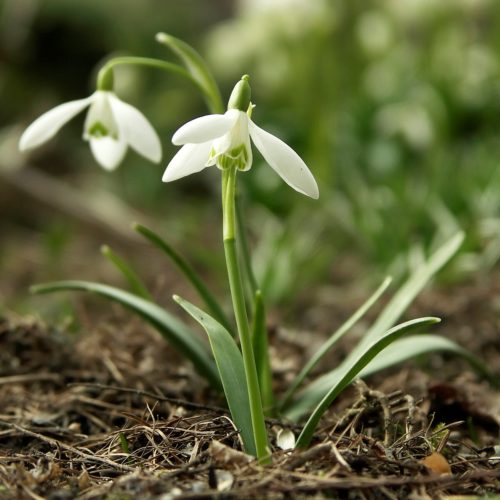Snowdrops belong to the amaryllis family; there are about twenty species of snowdrops.
Also known as:
Common snowdrop
Flower of hope
You are viewing the mobile-adapted version of the page.
The one for tablets, laptop and desktop also provides general information, such as origin, toxicity and cultivation.
- Snowdrops are poisonous, including to dogs and cats. Poisoning (vomiting, dizziness, diarrhea) occurs when the little bulbs are mistaken for shallots.
Snowdrop – (Galanthus). This bulbous plant belongs to the amaryllis family (Amaryllidaceae). There are about twenty species of snowdrops. The common snowdrop (Galanthus nivalis) is found across the UK in broadleaved woodland and can be seen in parks, gardens, meadows and scrub.
Snowdrops like damp lime- and humus-rich soil and a spot in partial shade. Most snowdrops bloom in late January/early February.
Once in the right place, they multiply rapidly and form large groups.
Bugs
Fungi & diseases
Flared snowdrops show gray fungal fluff, fail to grow and die: gray mold (Botrytis ssp.).
Small pointed infestations in the tips of unfurling leaves. Red discolorations appear around the affected spots: leaf scorch (Peyronellaea curtisii). Initially, the infestations look like frost damage.
Yellow-green, circle-shaped spots on leaves; serpentine lines: Cucumber mosaic virus (CMV).

